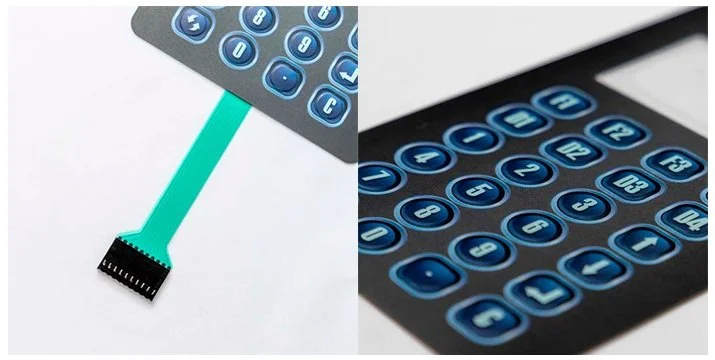
Membrane Switches & Keypads
Membrane Switches
A membrane switch, also known as a membrane keyboard or keypad, is a momentary switching device made up of several flexible layers of polymer films and adhesives.
The topmost layer of the membrane switch is typically called the graphic overlay, which is produced by printing on the second surface of clear polyester or polycarbonate film. The switch's circuitry is formed by screen printing conductive silver ink onto the layers.
Tactile feedback devices can be incorporated into membrane switches to alert the user when a switch has been activated. Additionally, other electronic components, such as LEDs, backlighting, and connectors, can be added, making membrane switches easy to integrate into a variety of systems or devices.
Hybrid Keypads
Hybrid membrane switches are a membrane switch alternative for those who desire a keypad that:
Offers the look and feel of a raised rubber keypad
Is ideal for applications requiring more design flexibility
Provides the same reliability of a moisture- and impact-resistant rubber keypads
Eliminates the need for intricate and expensive bezels
Rubber Keypads
Manufacturers custom silicone rubber keypads from compression-molded elastomer that mimics the full-travel feel of a mechanical A key advantage of electronic rubber keypad technology is the ability to use pressure-sensitive adhesive to marry them with flexible printed circuits, eliminating the need for bulky mechanical fasteners. There are more opportunities than ever to employ versatile, cost-effective rubber keypads into your human-machine-interface.



